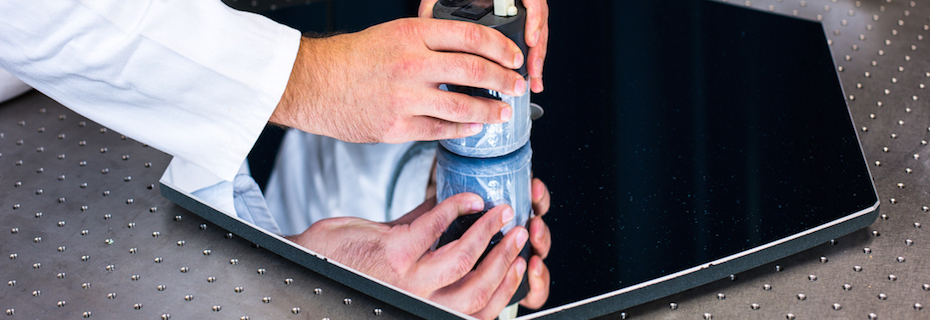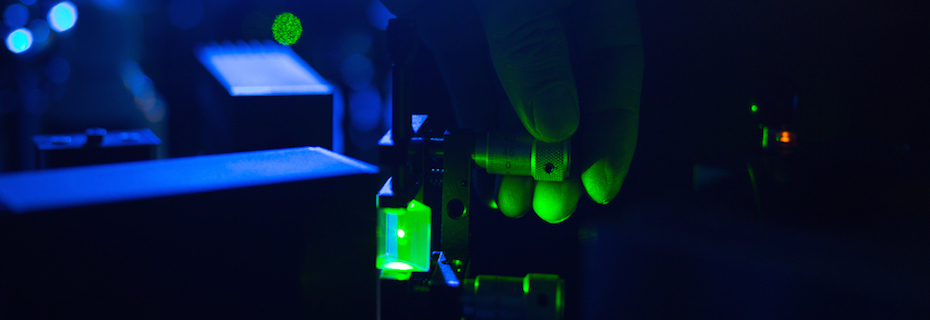Topic: Study of processes of diffractive production at the LHC.
Description: Diffractive processes in proton-proton or proton-nucleus collisions, as observed or expected to be seen at the LHC, represent a unique kinematic domain of interactions. Particles in the initial state can survive the interaction without altering their additive quantum numbers, while the inelastically transferred energy in the collision gives rise to a system of secondary particles, similar to what occurs in non-diffractive interactions. The kinematics of the final state in diffraction processes include original particles scattered at small angles, retaining a significant fraction of their initial momentum. This signature allows for the experimental identification and separation of diffraction processes. The ATLAS experiment at the LHC has collected and will continue to collect data enabling the study of diffraction processes. An important aspect of LHC data analysis is the examination of simulated data produced using collision event generators based on the Monte Carlo method. These generators perform the integration of theoretical cross-sections and random generation of collision events. Work on the development of generators for diffraction processes has been relatively limited in recent years, presenting an opportunity to make significant contributions and stimulate progress in this field.
Supervisor: RNDr. Karel Černý, Ph.D.
Contact: karel.cerny@upol.cz
Topic: Collective measurements for quantum communications
Description: Collective measurements are quantum measurements carried out simultaneously on multiple copies of the quantum state under investigation. They have been shown to be an invaluable tool for efficiently detecting and quantifying several key properties of quantum states, such as different entanglement measures or stronger quantum correlations. At the same time, collective measurements can be easily implemented in quantum communications networks, making them a key tool for the operation of prospective large-scale quantum networks connecting multiple users. Thus, the study of collective measurements promises interesting fundamental insights as well as results applicable to practical quantum communications.
Supervisor: doc. Mgr. Karel Lemr, Ph.D.
Contact: k.lemr@upol.cz; kancelář SLO 3.22
Topic: Fisher information in classical and quantum optics
Description: Fisher information is a quantity that allows the calculation of the uncertainty with which the value of a parameter can be determined. In classical and quantum optics, it is used to calculate the uncertainty with which the value of the phase in a Mach-Zehnder interferometer can be determined. Calculations of measurement uncertainty for different types of light will be performed. The results obtained using classical and quantum methods will be compared with each other.
Supervisor: doc. RNDr. Pavel Pavlíček, Ph.D.
Contact: kancelář 2.18, tel. 585 631 680, e-mail pavel.pavlicek@upol.cz
Topic: Characteristics of Low-Photon Detectors for Next-Generation Neutrino Experiments
Description: The Water Cherenkov Test Experiment (WCTE) is an ongoing experiment on a secondary particle beam at CERN. Its purpose is to test technologies for the upcoming neutrino experiment Hyper-Kamiokande (Hyper-K) and measure certain particle cross-sections, such as those of muons and pions, as they pass through matter.
The test beam campaigns focused both on monitoring the composition of the beam using aerogel Cherenkov detectors and time-of-flight scintillation detectors—with the use of photomultipliers, digital readout, and subsequent data processing—and on testing multi-PMT modules for the IWCD (Intermediate Water Cherenkov Detector) and the Hyper-K experiment itself. The latter is scheduled for assembly in 2028 and will begin collecting calibration and physics data.
For its physics program, simulations and feasibility studies will be crucial, along with work on reconstructing the kinematics of particles producing Cherenkov signals and separating the signal from background.
The student will contribute to testing photomultipliers for the IWCD and Hyper-K detectors in the Joint Laboratory of Optics and will also have the opportunity to actively participate in the analysis of existing data of 2025 from the WCTE experiment. They will become familiar with tools for data analysis in high-energy physics using a small-scale version of the detector for future neutrino observatories and will engage in construction, simulations, and possibly analysis of available data from the Hyper-K experiment.
Supervisor: doc. Mgr. Libor Nožka, Ph.D.
Consultant: Mgr. Jiří Kvita, Ph.D.
Contact: libor.nozka@upol.cz
Topic: Simulation and Data Analysis for the WCTE and Hyper-Kamiokande Experiments
Description: The Water Cherenkov Test Experiment (WCTE) is an ongoing experiment on a secondary particle beam at CERN. Its purpose is to test technologies for the upcoming neutrino experiment Hyper-Kamiokande (Hyper-K) and measure certain particle cross-sections, such as those of muons and pions, as they pass through matter.
The test beam campaigns focused on monitoring the composition of the beam using aerogel Cherenkov detectors and time-of-flight scintillation detectors—with the use of photomultipliers, digital readout, and subsequent data processing—as well as testing multi-PMT modules for the IWCD (Intermediate Water Cherenkov Detector) and Hyper-K experiments. The Hyper-K experiment is scheduled for assembly in 2028 and will begin collecting calibration and physics data.
For its physics program, simulations and feasibility studies will be crucial, along with work on reconstructing the kinematics of particles producing Cherenkov signals and separating signal from noise.
The student will have the opportunity to contribute to simulations of the WCTE and Hyper-Kamiokande experiments using the WCSim program based on the Geant4 toolkit. Additionally, he/she will use available reconstruction tools, such as likelihood-based methods (fitQun) or machine learning approaches (WatChMaL), to analyze data from 2025 from the WCTE experiment.
The student will gain experience with data analysis tools in high-energy physics using a small-scale version of the detector for future neutrino observatories and will also engage in construction, simulations, and potentially analysis of available data from the Hyper-K experiment.
Supervisor: Mgr. Jiří Kvita, Ph.D.
Contact: jiri.kvita@upol.cz
Topic: Micro- and Nano-Optical Films in Automotive Lighting: Opportunities and Challenges in Implementing Disruptive Technologies
Description: This PhD thesis should explore the application of micro- and nano-optical films in automotive lighting, focusing on their potential to enhance efficiency, design flexibility, and performance. It will discuss the key opportunities offered by these advanced optical technologies, including potentially improved light control, relevant energy savings for future sustainability solutions in automotive lightning technologies, and aesthetic advantages. Additionally, the study should examine the challenges associated with implementing such disruptive technologies, such as manufacturing complexities, cost considerations, and regulatory compliance. Detailed material, physical and optical properties should be evaluated and comprehensively reviewed. The work will provide insights into the advancements in the field and evaluate their feasibility for integration into modern automotive lighting systems. From theoretical point of view, PhD thesis will be focused on the theory of Micro- and Nano- structured optical surfaces, their design, calculation and evaluation.
Supervisor: doc. Mgr. Libor Nožka, Ph.D.
Consultant: doc. Mgr. Pavel Tuček, Ph.D.
Contact: libor.nozka@upol.cz
Topic: Optical detecting systems for cosmic radiation – selected questions
Description: The topic is concentrated on the study of current optical detectors of cosmic radiation, participation in some of current international scientific projects of cosmic-ray research and participation at the research of new particular types of optical detectors of cosmic radiation, including participation in the scientific part of a related international collaboration.
Supervisor: prof. RNDr. Miroslav Hrabovský, DrSc.
Contact: kancelář 2.11
tel. 585 63 1501
Topic: Analysis of characteristics of parametric down-conversion
Description: Simulation and testing of spontaneous parametric down-conversion, correlation measurement using photon-counting techniques as well as by classical intensity measurement.
Supervisor: prof. RNDr. Ondřej Haderka, Ph.D. / prof. RNDr. Jan Peřina, Ph.D.
Contact: kancelář 2.47/3.21
tel. 585 63 1511/1509
Topic: Photocount statistics and its measurement in nonlinear optical processes
Description: Theoretical models of photocount statistics arising in different nonlinear optical processes will be studied. Special attention will be paid to parametric processes. Characteristics of the obtained fields will be discussed with respect to measurement.
Supervisor: prof. RNDr. Jan Peřina, Ph.D.
Contact: kancelář 3.21
tel. 585 63 1509
Topic: Characteristics of parametric processes in nonlinear periodically-poled media
Description: Space beam properties. Study of efficiency of various processes. Optimization of generation of frequency down-conversion.
Supervisor: prof. RNDr. Jan Soubusta, Ph.D.
Contact: kancelář 3.23
tel. 585 63 1577
Topic: Testing modern materials using optical spectroscopic methods
Description: Measurement of absorbance, fluorescent and time-resolved fluorescent spectra of carbon, metal and metal-oxide nanostructures. Development of appropriate methods.
Supervisor: prof. RNDr. Jan Soubusta, Ph.D.
Contact: kancelář 2.47/3.23
tel. 585 63 1511/1577
Topic: Damage of materials induced by nanosecond particle bunches
Description: Laser-driven particle-acceleration experiments produce high luminosity particle bunches of nanosecond lengths. The aim of the thesis is to inspect mechanisms of damage induced in materials due to the interaction with such a short-time bunched particles.
Supervisor: prof. Jan Řídký, DrSc.
Contact: ridky@fzu.cz
Topic: Noclassical properties of simple PT-symmetric quantum systems described using methods of quantum statistical physics
Description: Simple quantum PT-symmetric and generalized systems like two- and more-level atoms and multi-mode optical bosonic systems will be studied from the point of view of their nonclassical properties. The analyzed systems will be described by Liouvillians and attention will be paid to their asymptotic behavior. Exceptional points are the striking features of PT-symmetric systems. At these points, the system behavior qualitatively changes, which may be used, e.g., for increasing sensitivity of quantum measurements. We will identify the exceptional points of analyzed systems including their degeneracies and study the behavior of system nonclassicality close to these points. We will look for suitable applications that expoint the striking properties of the analyzed systems.
Supervisor: prof. RNDr. Jan Peřina, Ph.D.
Contact: tel. 585631509,e-mail: jan.perina.jr@upol.cz



